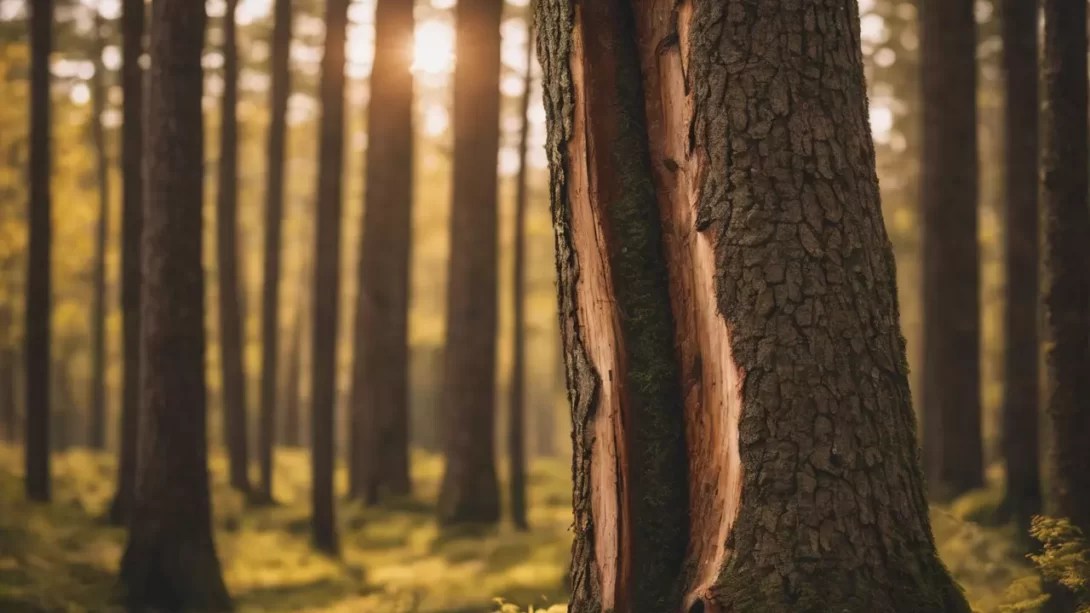Vertical splitting in tree trunks is a common issue that can lead to significant damage or even the loss of a tree. Understanding the causes of this problem is crucial for effective tree care and management. This phenomenon can result from various factors, ranging from natural growth processes to environmental stressors and human activities. In this article, we will explore the different causes of vertical trunk splitting and how to address them.
Natural Causes of Vertical Trunk Splitting
One of the primary natural causes of vertical splitting in tree trunks is growth stress. As trees grow, the expansion of the trunk can sometimes lead to splits, particularly in species with rapid growth rates or those with certain wood characteristics. These splits often occur along the grain of the wood and can be exacerbated by other factors.
Environmental factors play a significant role in trunk splitting. Extreme weather conditions, such as frost, can cause the water inside the tree to freeze and expand, leading to splits in the trunk. Similarly, fluctuations in temperature, especially sudden changes between hot and cold, can cause the wood to expand and contract, leading to splitting. Trees that are exposed to direct sunlight or heat sources are particularly susceptible to this type of damage.
Human-Induced Factors
Improper pruning techniques can also lead to vertical splitting in tree trunks. When large branches are removed incorrectly, it can create imbalances in the tree’s structure, leading to stress and potential splits. Additionally, cuts that are made too close or too far from the trunk can hinder the tree’s natural healing process, making it more vulnerable to splitting.
Mechanical damage is another human-induced factor contributing to trunk splitting. This can occur from lawn mowers, vehicles, construction work, or any physical impact to the tree. Such damage often affects the bark and outer layers of the trunk, weakening the tree’s structure and making it more susceptible to splitting, especially under environmental stresses.
Tree Species and Susceptibility to Splitting
Certain tree species are more prone to vertical splitting due to their genetic and structural characteristics. For example, some fast-growing species like willows and poplars tend to have more brittle wood, making them more susceptible to splitting. Additionally, species with naturally thin bark, such as cherry and plum trees, can be vulnerable to splits due to less protection against environmental factors.
Older trees or those with a history of stress are also at a higher risk of trunk splitting. Over time, the cumulative effects of environmental stressors, injuries, and diseases can weaken the structural integrity of the trunk, leading to splits.
The Role of Diseases and Pests
Diseases and pests can significantly contribute to the likelihood of a tree trunk splitting. Fungal infections, such as those caused by certain wood decay fungi, can weaken the wood structure from the inside, making the tree more susceptible to splitting. Signs of fungal infection include the presence of mushrooms or conks on the tree trunk or at its base.
Pest infestations, particularly by wood-boring insects, can exacerbate the issue. These pests tunnel through the wood, creating pathways that can destabilize the trunk and increase the risk of splitting. Signs of pest infestation include exit holes, sawdust-like frass, or weakened and dying branches.
Preventative Measures and Tree Care
Preventing vertical trunk splits involves a combination of proper tree care and protection. Proper pruning techniques are crucial; pruning should be done in a way that maintains the tree’s natural shape and balance, avoiding large cuts that can leave the tree vulnerable. It’s also important to prune during the right time of year for the specific tree species.
Maintaining overall tree health through regular watering, especially during dry periods, and mulching can help reduce stress and make trees less prone to splitting. Mulch helps regulate soil temperature and moisture, providing a more stable environment for the tree’s roots.
Protecting trees from mechanical damage is also key. This can include physical barriers around the tree to prevent damage from lawn equipment or vehicles, and being mindful of tree health during construction or landscaping projects.
Treatment and Repair of Split Trunks
When a tree trunk has already split, the approach to treatment and repair depends on the severity of the split and the overall health of the tree. Minor splits that do not compromise the tree’s structural integrity may heal over time, especially in younger, more resilient trees. In these cases, proper care and monitoring are essential to ensure the tree’s recovery.
For more significant splits, intervention may be necessary. One common method is bracing or cabling the tree. This involves installing support systems to hold the split sections together, preventing further damage and giving the tree a chance to heal. This should be done by a professional arborist, as improper bracing can cause additional harm.
In cases where the split is severe and poses a risk to the tree’s survival or to nearby property and people, it may be necessary to remove the tree. An arborist can assess the situation and recommend the best course of action.
When to Consult Professional Arborists
Professional arborists should be consulted in several situations:
- When the split is severe or the tree is large, as these situations require specialized knowledge and equipment.
- If there is uncertainty about the health of the tree or the best course of action.
- For regular tree health assessments, especially for older or vulnerable trees.
Professional arborists can provide advice on tree care, treatment options for splits, and preventative measures to protect the tree from future damage.
Conclusion
Vertical splitting in tree trunks can result from a variety of causes, ranging from natural growth processes to environmental stressors, diseases, and human activities. Understanding these causes and the specific needs of different tree species is essential for effective tree management. Preventative measures, such as proper pruning, protecting trees from damage, and maintaining overall tree health, are key to preventing splits. When splits do occur, a combination of careful monitoring, appropriate treatment, and professional advice can help manage the issue and preserve the health and beauty of the tree. Ultimately, the goal is to maintain a safe and healthy environment where trees can thrive and continue to contribute to the ecosystem.



